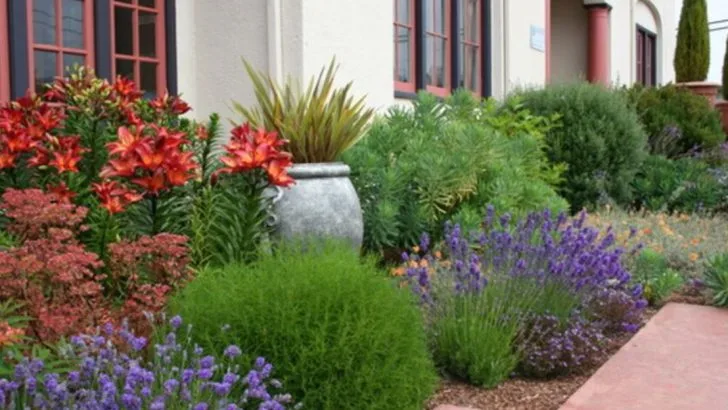Dreaming of a lush, sun-soaked garden that thrives without constant watering? A Mediterranean-style garden is not only beautiful and climate-resilient—it’s also surprisingly easy to maintain without irrigation.
By choosing the right mix of drought-tolerant plants, grouping them strategically, and using smart design elements like mulch, gravel, and shaded pockets, you can create a space that stays vibrant through long dry spells. Think lavender, rosemary, thyme, and silvery-leaved shrubs that thrive on neglect and sunshine.
In this article, you’ll learn how to build a low-water, high-impact Mediterranean garden that feels effortless—because it practically is.
Choose Drought-Resistant Plants
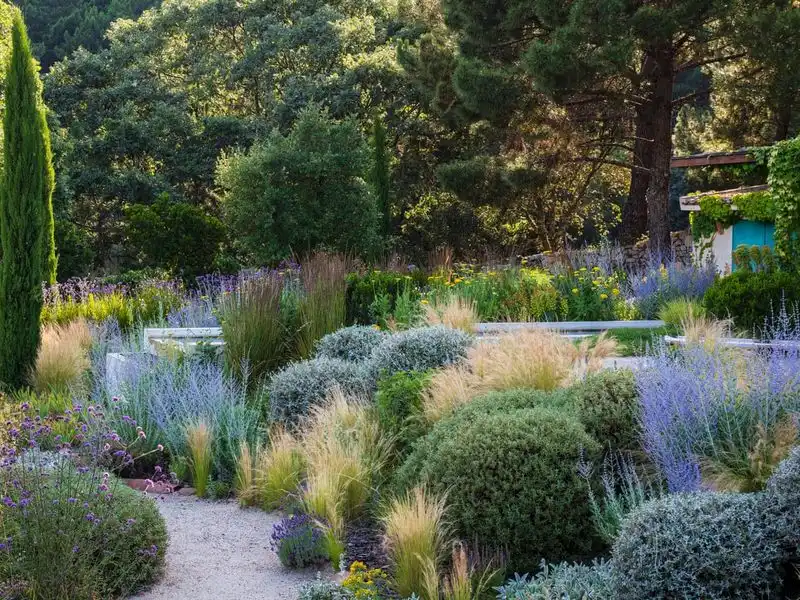
Selecting the right plants is paramount for a successful Mediterranean garden. Opt for drought-resistant varieties like lavender, rosemary, and olive trees. These plants not only withstand dry conditions but also add fragrance and texture.
Position them strategically based on sun and shade preferences to enhance growth. The resilience of these plants is not just in their roots but in their leaves, which often have a waxy coating to reduce water loss.
Including a mixture of ground cover, shrubs, and trees creates a diverse ecosystem that mimics nature’s balance.
Implement Mulching Techniques
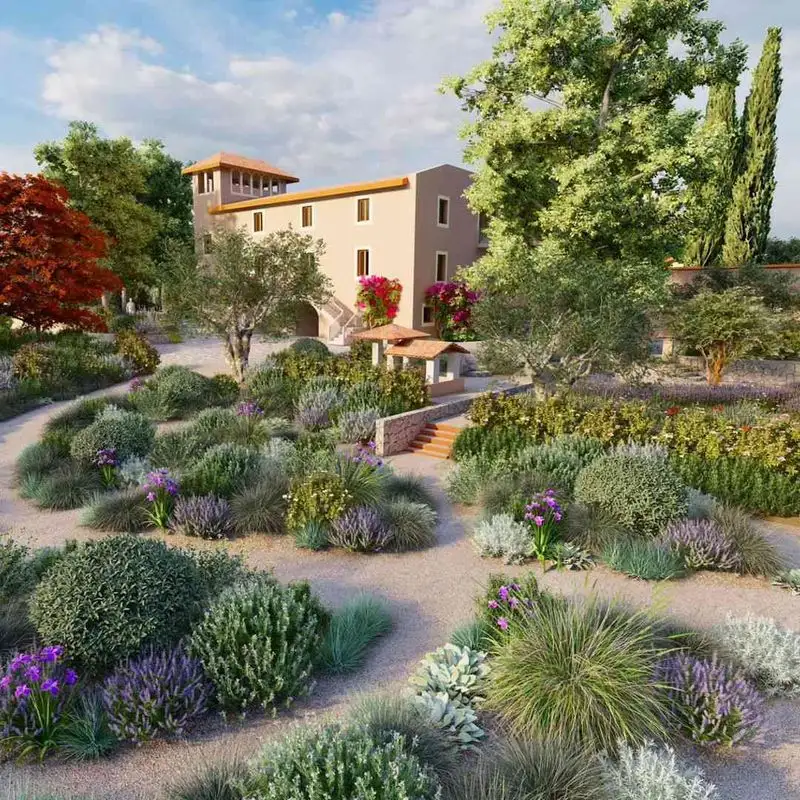
Mulching serves as a protective barrier for your garden, significantly reducing water evaporation. Use organic materials like bark, straw, or wood chips to cover the soil surface.
This layer not only conserves moisture but also suppresses weeds and enriches the soil as it decomposes. In a Mediterranean garden, mulching is your ally against the harsh sun.
Additionally, it regulates soil temperature, providing a consistent environment for plant roots. Mulching is an art that requires attention to detail, ensuring every inch of soil is covered.
Design Natural Windbreaks
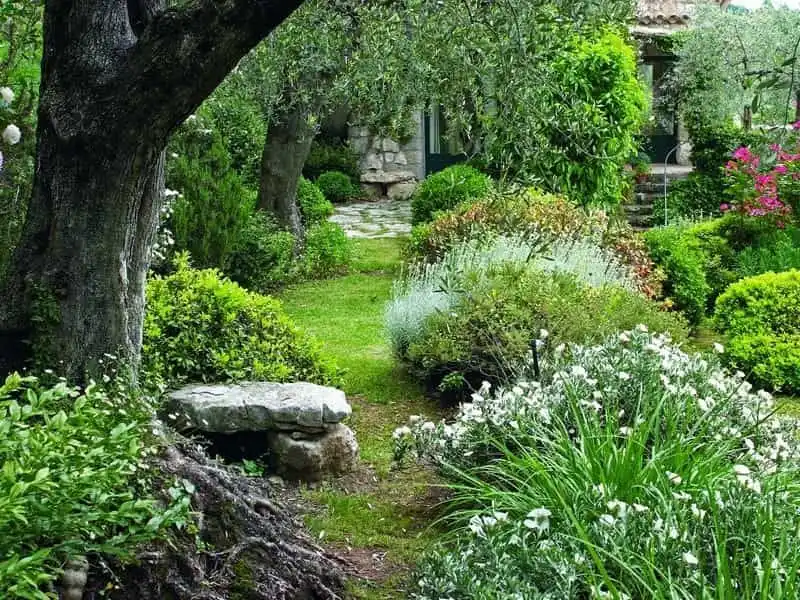
Wind can be a garden’s adversary, drying out soil and damaging plants. Designing natural windbreaks with hedges or trees combats this issue.
Choose dense foliage that can withstand gusts, such as cypress or juniper. These windbreaks protect delicate plants and create microclimates within your garden.
Interestingly, windbreaks can also enhance the aesthetic appeal, adding layers and depth to the landscape. Thinking creatively about placement transforms potential wind problems into advantages.
Optimize Soil Health
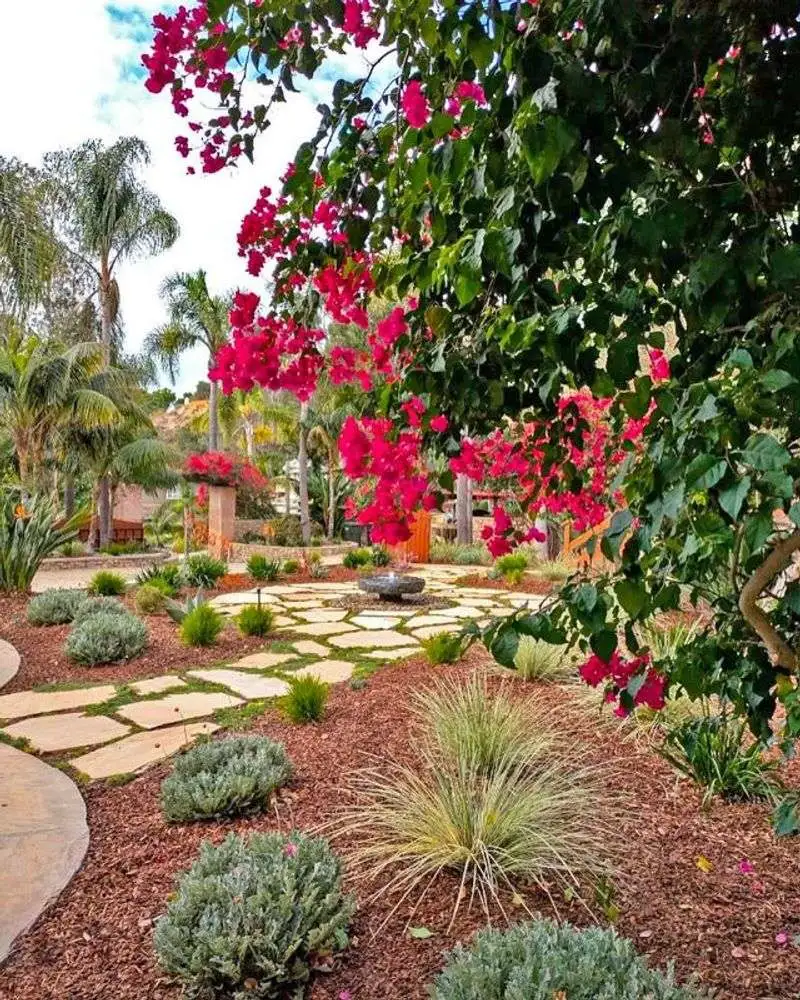
Soil is the foundation of any garden, and in a Mediterranean setting, its health is crucial. Start by testing the soil to understand its composition and pH level.
Amendments like compost or well-rotted manure improve structure and nutrient content. Healthy soil retains moisture efficiently, reducing the need for irrigation.
Regularly check for pests or diseases, as healthy soil fosters resilient plants. The key is balance; too much or too little of any component can tip the scales away from thriving growth.
Utilize Companion Planting
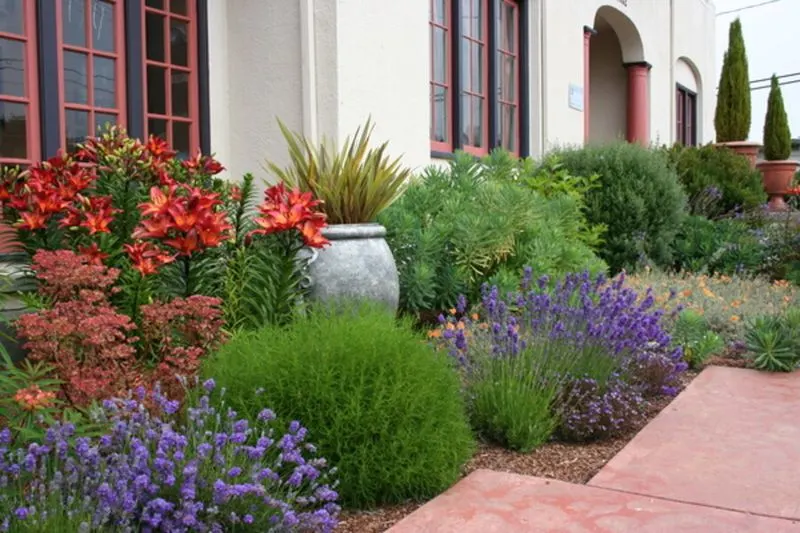
Companion planting is a time-honored technique that boosts plant health and yield. Pairing plants like tomatoes with basil or carrots with rosemary creates beneficial relationships.
This method not only maximizes space but also reduces pests naturally, as some plants repel insects. In a Mediterranean garden, companion planting enhances the overall ecosystem.
Beyond functionality, this approach adds a tapestry of colors and scents, elevating the garden’s sensory experience. It’s a holistic way to nurture your green space.
Incorporate Water-Saving Irrigation Systems
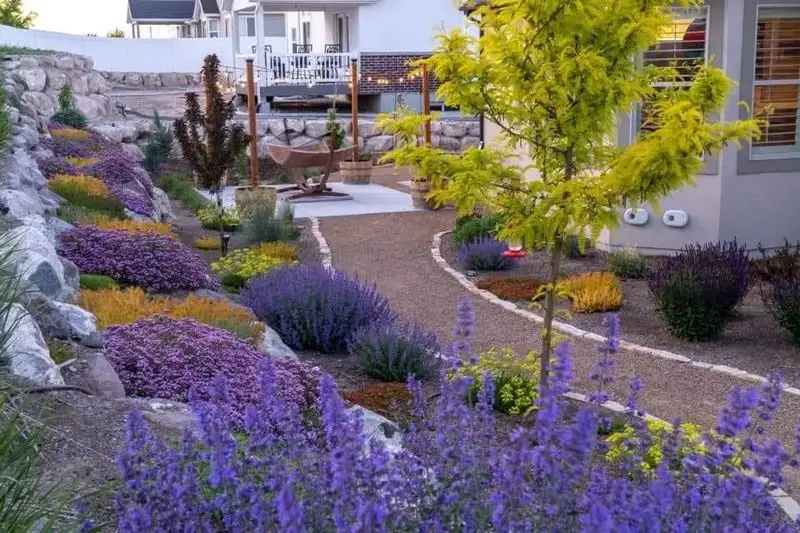
Even without traditional irrigation, water-saving systems can play a role in a Mediterranean garden. Drip irrigation or soaker hoses deliver water directly to the roots, minimizing waste.
These systems are ideal for periods of drought or establishing young plants. Adjusting the flow and timing ensures each plant receives the necessary hydration.
Innovations in irrigation technology mean even the most water-conscious gardener can maintain plant health with minimal resource use. This method aligns perfectly with the Mediterranean ethos of sustainability.
Focus on Microclimate Design
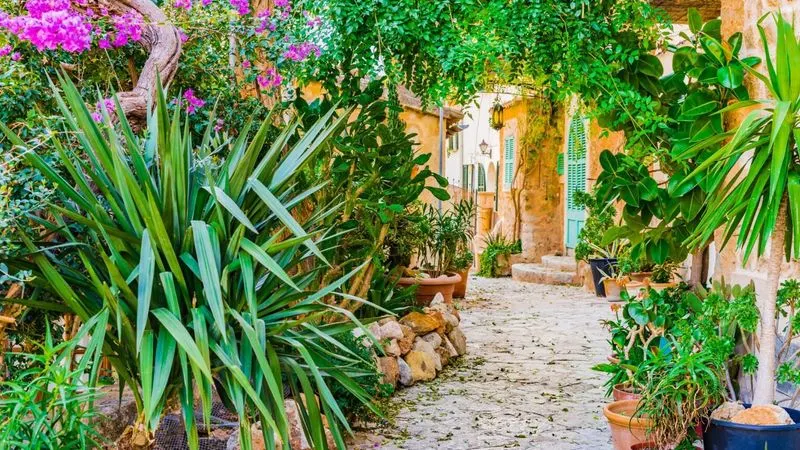
Microclimates are small areas with unique atmospheric conditions. Designing with microclimates in mind allows for diverse plantings in a Mediterranean garden.
Factor in elements like sun exposure, elevation, and wind to create distinct zones. These microclimates cater to varying plant needs, ensuring optimal growth.
The beauty of this approach lies in its adaptability, allowing gardeners to cultivate a wide range of species. It’s about working with nature’s nuances rather than against them.

